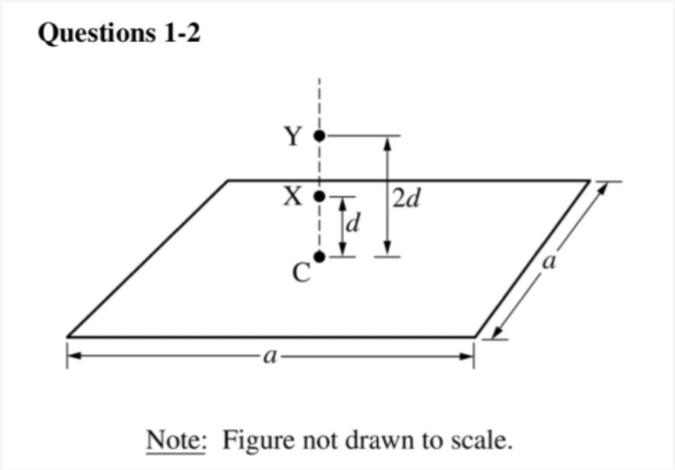1. 
The figure above shows a thin, square, nonconducting sheet of positive charge uniformly distributed over its area. The length of each side of the sheet is a. Point C is at the center of the sheet. Point X is a distanced above the center of the sheet, and point Y is a distance 2d above the center of the sheet. Assume a>>d. The effect of gravity is negligible.
1·If the magnitude of the electric field at point X is E,what is the magnitude of the electric field at point Y?